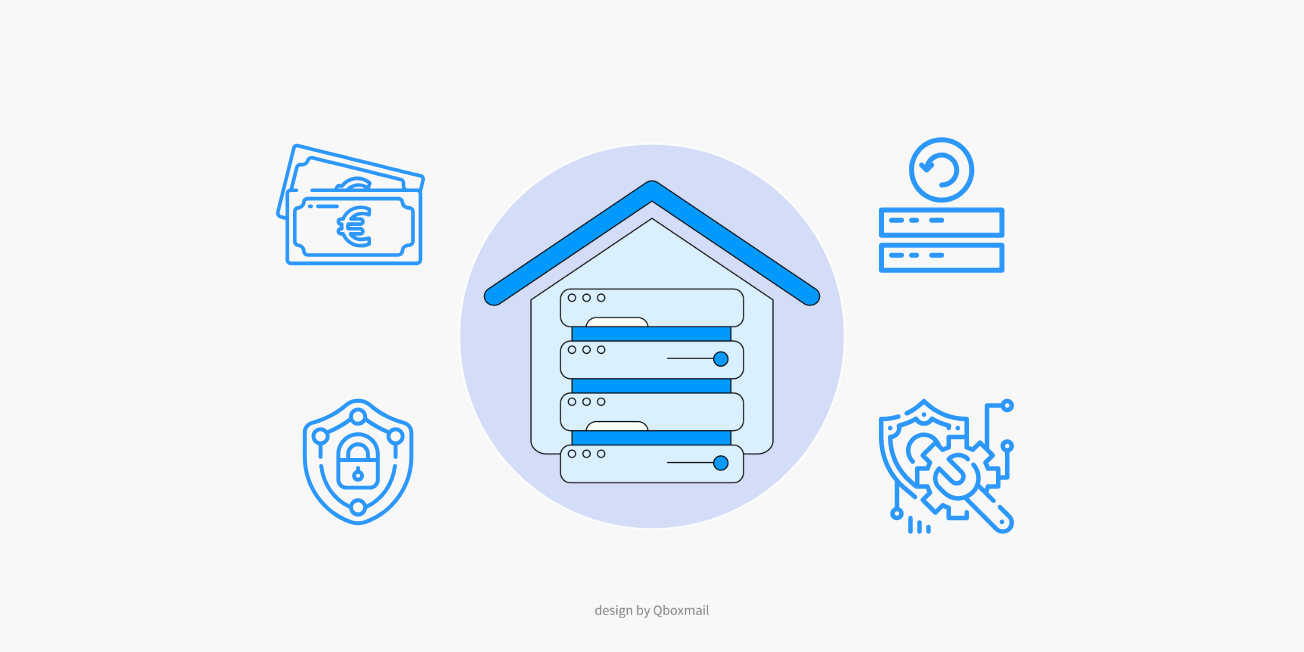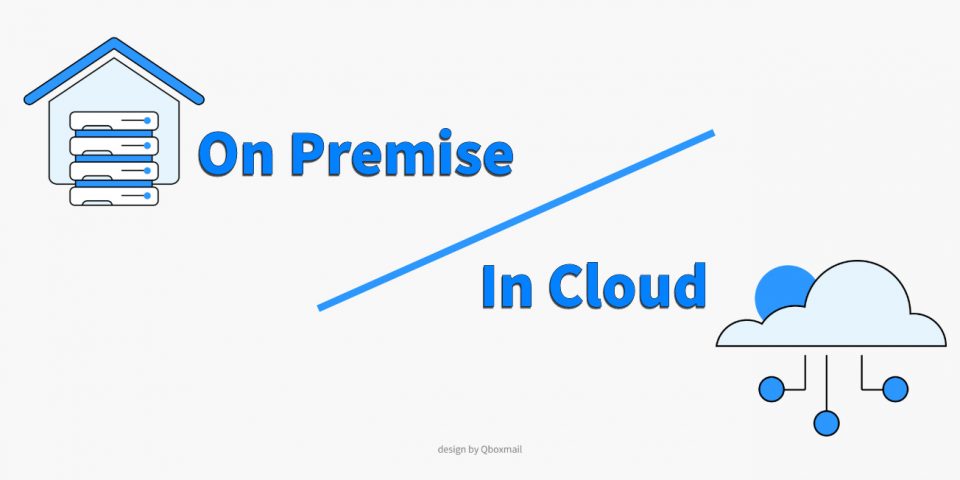Ten reasons why an On-Premise mail server isn’t an advantageous choice

Many companies remain loyal to the software they’ve used for years. This choice implies stability and operational continuity and avoids the impact and risks of change.
The adoption and management of an On-Premise mail server may seem like a long-term investment, but there are many disadvantages to consider.
The continuous evolution of the ICT sector and the growing complexity of business needs have led to new software solutions.
This scenario has inevitably questioned the established concept that “a winning team doesn’t change.”
For example, to address the ever-increasing challenges of cybersecurity, it is essential to constantly update and renew business software.
Managing On-Premise mail servers also poses significant risks if maintenance and security aren’t regularly updated.
The need for regular updates and the infrastructure maintenance, can lead to higher operational costs and increased management complexity.
On-Premise solutions provide the benefit of keeping data on-site and maintaining almost complete control of the infrastructure.
However, these features could become burdensome in the medium to long term.
Opting for an On-Premise email server impacts business operations.
However, choosing the Cloud often emerges as the optimal solution, offering advantages in flexibility, security, scalability, and long-term savings.
Let’s examine together the main disadvantages related to the use of an on-premise mail server:
1 Significant initial costs
Employing an on-premise mail server requires a significant investment in hardware and software procurement, along with initial configuration and installation.
Additionally, it necessitates physical space for hardware placement and supplementary resources like power and cooling to ensure continuous infrastructure operation.
2 High maintenance costs
Implementing an On-Premise mail server requires significant resources in terms of time, personnel, and infrastructure. Periodic hardware and software updates, management of security patches, and resolution of technical issues can increase operational costs.
3 Risk of service interruptions
Mail server maintenance can result in service interruptions, impacting productivity and causing inconvenience. Even a single prolonged interruption can have significant consequences for the company in terms of data loss, time, and reputation.
4 Limited scalability and agility
The scalability of an On-Premise mail server is constrained by available hardware resources. This limitation makes it challenging to accommodate the company’s growth needs without substantial additional investments.
5 Security and compliance
Managing security and regulatory compliance on on-premise mail servers can be complex and expensive, with the risk of data security breaches and regulatory sanctions.
6 Delicate software updates
Software updates and the application of security patches can be delicate and complex tasks, requiring interventions by specialized technicians. Having them performed by unqualified personnel increases the risk of errors and security vulnerabilities.
7 Complexity of hardware management and maintenance
Managing an on-premise mail server requires specific technical skills and qualified personnel to ensure the correct operation of the infrastructure. This can lead to increased operational complexity and costs associated with staff training.
8 Limitations in mobility and remote access
On-premise solutions may present limitations in remote access and collaboration among employees working in different locations, resulting in reduced flexibility and productivity.
9 Lack of flexibility
An On-Premise mail server restricts email access to internal networks. This limitation hampers employees’ flexibility and mobility in accessing emails from external devices or while traveling.
10 Technological obsolescence
Digital transformation and technological evolution can rapidly make On-Premise mail servers obsolete.
This may necessitate costly upgrades or replacements to align with new features or business needs.
Consider these factors carefully before making an important decision for your IT infrastructure.
It’s undeniable that the option of an On-Premise mail server offers greater control over data and operations.
However, it’s evident that it presents significant disadvantages in terms of costs, complexity, and flexibility compared to cloud-based solutions.
Would you like to experience the benefits of a Cloud Email management service?
Qboxmail specializes in Cloud Email management.
Contact us for personalized consultation and discover how our solution can enhance your company’s efficiency and productivity.
